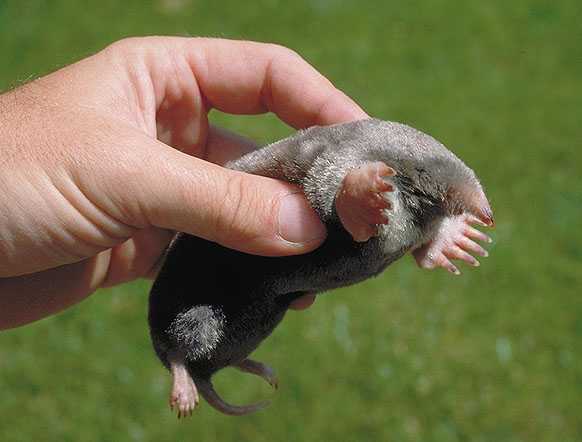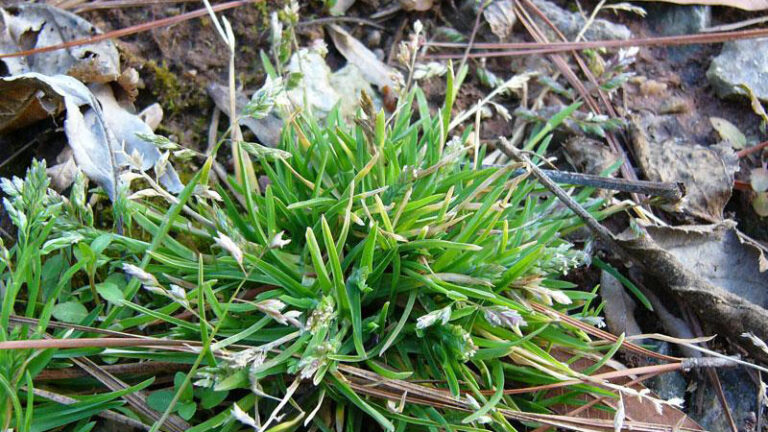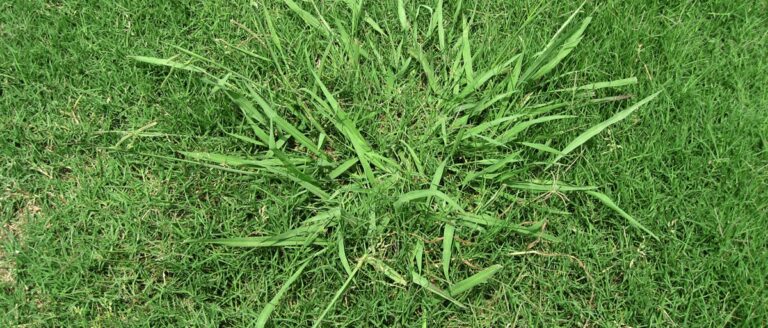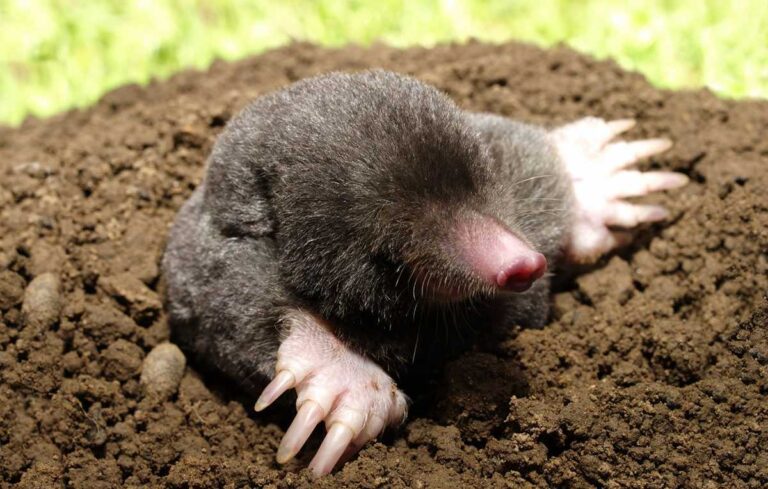Using Vinegar to Get Rid of Ground Moles in Your Lawn
Moles are small creatures but can be a headache to your garden, lawn, and flowerbeds. They are fast diggers that can easily tunnel more than 10 feet within minutes. Like other garden creatures, they invade lawns looking for food. While they don’t intend to be pests in your garden, moles invade gardens looking for ground-dwelling grubs and other insects. Unfortunately, their quest in search of food wreaks havoc on your garden.
That said, you should try humane options for eliminating these creatures before resorting to lethal measures. Among the most effective solutions for dealing with moles is spraying their favorite spots with a vinegar mixture. This guide can help you better understand how to get rid of ground moles with vinegar.
Can Vinegar Eliminate Ground Moles from Your Garden?
Using vinegar to eliminate ground moles in your garden may seem far-fetched. However, the common vinegar contains tartaric and acetic acids, which effectively repels these critters. Tartaric acid is the ingredient behind vinegar’s overpowering smell that repels moles. On the other hand, acetic acid corrodes its skin.
Vinegar is also liquid, which means it can easily reach deep into these small critters’ nests. This explains why most people prefer this natural solution, especially in less-infested gardens. That aside, moles can’t develop resistance against vinegar, unlike other solutions, such as poison, where surviving moles become resistant.
Reasons for Using Vinegar to Get Rid of Ground Moles
Vinegar is among the many natural solutions you can use to get rid of ground moles in your garden. However, you should consider vinegar over other solutions for the following reasons:
- Vinegar is a powerful solution – vinegar is a powerful acid that effectively eliminates ground moles, skunks, raccoons, snakes, and other garden animals. Moles don’t like the pungent smell of vinegar. Vinegar also leaves a residue in underground tunnels, making them inhabitable for moles.
- Prevents moles – besides repelling ground moles that are already in your garden, vinegar also prevents them from regrouping after the initial dispersion. This makes it a perfect proactive solution for homeowners who live in areas prone to these pests.
- Generally safe – vinegar is versatile and safe to use around young children and pets. Household vinegar is non-toxic and doesn’t cause harm if ingested accidentally.
- Environmentally friendly – using vinegar is an environmentally friendly way of getting rid of ground moles in your garden. Vinegar won’t pollute air or water, even when used in large amounts.
- Affordable – apple cider vinegar is inexpensive, making it an affordable option for getting rid of ground moles. You can also use it for pest control, as a cleaning agent, disinfectant, and stain remover.
- Readily available – nearly all vinegar types are available in local grocery stores. This means homeowners and gardening enthusiasts can easily get their hands on it. Common locally available types include rice vinegar, white vinegar, and red wine vinegar.
Vinegar also offers a compassionate solution for getting rid of ground moles. As mentioned, it produces a pungent smell that moles generally don’t like. It also irritates their skin, motivating them to get out of your garden. Vinegar won’t kill moles, making it a compassionate pest-removing option.
Steps to Get Rid of Ground Moles Using Vinegar
As mentioned, ground moles cannot develop resistance to vinegar like other solutions. They’ll immediately evacuate from your garden once they smell the solution. Below are the steps on how to get rid of ground moles with vinegar:
1. Confirm the presence of mole infestation
You should first confirm that critters in your yard are moles before looking at the other steps on how to get rid of ground moles with vinegar. Most people assume that small holes and raised dirt in their garden are a sign of mole infestation. However, small holes in the garden can be caused by many animals, including snakes.
Therefore, you should confirm that you have a mole infestation before arming yourself with vinegar. As mentioned, moles invade your garden if they’ve identified food sources. The following are signs of mole infestation in the lawn:
- Pyramid shaped molehills
- Patches of discolored and dying grass
- Unexplainable growth of weeds
- Dead grass and plants – while moles don’t eat plants, their burrowing activity indirectly damages plant roots.
- Raised ridges crisscrossing the lawn
- Patches of squishy soil
You can easily confuse mole and vole infestation. However, you can differentiate them by checking the damage to tubers and plant roots in your garden. Moles damage plant roots, while voles eat plant roots.
2. Prepare the solution
You should only prepare the apple cider vinegar solution once you’ve confirmed the presence of ground moles in your garden. This is probably the most important step in how to get rid of ground moles with vinegar. Fortunately, preparing the vinegar solution is very simple. Simply mix one part of vinegar with three parts of water. Choose apple cider vinegar instead of white vinegar because of its high potency.
Mix the solution in a water or a bucket and spray the affected parts of the garden. Ensure that you focus on molehills and areas surrounding the molehills and tunnels. Avoid using horticultural vinegar as it is five times stronger than vinegar used in homes. It will damage your garden plants and animals. It is also harmful and corrosive to the skin.
3. Apply vinegar solution along the edges
You’ll notice a significant reduction in mole presence and activity after spraying the affected parts with the mixture. Vinegar’s pungent smell will naturally discourage ground mole activity in the garden. Besides, contact with vinegar also kills the remaining moles. Vinegar also remains in form of residues in the underground tunnels, discouraging new mole colonies from entering your lawn. You should additionally spraying vinegar solution on your lawn edges.
What You Should Keep in Mind When Using Vinegar to Get Rid of Moles
While the above information provides the basics on how to get rid of ground moles with vinegar, you should know the following tips to ensure your garden remains free from mole infestation.
- Eliminate possible sources of food – as mentioned, moles invade your lawn looking for food sources. Therefore, eliminating food sources is an easy way of ensuring moles don’t find your garden habitable. You can eliminate insects using insecticides or nematodes.
- Make your garden unsuitable – there are many other things that draws moles to your garden apart from food. Moles also like yards with loamy soil that is moist and full of organic matter. Disrupting these conditions, such as reducing irrigation levels, creates an unattractive habitat.
- Keep your lawn clutter-free – moles, insects, and other rodents like gardens with hiding spots. Clearing clutter from your garden eliminates these hiding spots. Trimming your lawns and properly disposing of organic debris makes your garden unattractive.
- Dig a trench barrier – moles mostly spread from one garden to another through burrowing. You can stop this by digging a trench barrier. The trench should be at least 30 inches. You can further prevent burrowing by lining the trench with chicken wire, aluminum sheet, or hardware cloth.
- Use plant barriers – spraying vinegar weekly or monthly is certainly tiring. You can avoid this by planting plants with strong smells like alliums and marigolds. Their strong smell discourages mole invasion.
Combining vinegar with the above tips is a sure way of ensuring moles can’t survive in your garden. Digging a trench and planting plant barriers prevents their entrance, while vinegar repels them from the garden.
Other Ways of Deterring Moles from Entering Your Yard
Vinegar isn’t the only solution to getting rid of ground moles from your garden. Other options you should try include:
- Diatomaceous earth – using diatomaceous earth is another effective way of eliminating ground moles from your garden. DE is ground-up fossils from algae that effectively kill grubs and make your garden soil unappealing to ground moles.
- Ultrasonic repellents – these repellents are effective against moles as these animals hate sound disturbance. However, ensure that you pick a repellent specifically designed for moles and gophers.
- Use castor oil and dish soap – a mixture of castor oil and dish soap also repels moles. For this, mix one part of dish soap with three parts of castor oil and apply it throughout the yard.
- Repellent granules – you can also opt for repellent granules to get rid of moles in the garden. However, like ultrasonic repellents, ensure that you choose granules specifically designed for moles and gophers. These granules release castor oil, which is non-toxic to moles but deters them.
- Try catching them – setting traps is another effective way of ridding moles from your garden. You can move and release the trapped moles in another location.
You should consider combining these methods to control moles effectively in your garden.
The Bottom Line
Dealing with ground moles problems is certainly frustrating. Fortunately, you can explore simple ways of dealing with moles, like using vinegar. While there are no research studies supporting or disapproving the use of vinegar to eliminate moles, those who’ve used it have confirmed its effectiveness.






